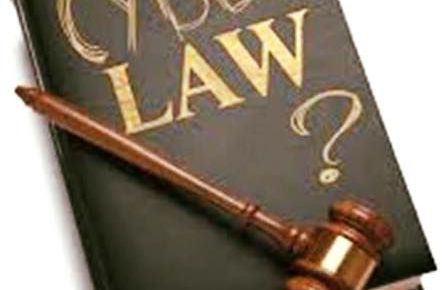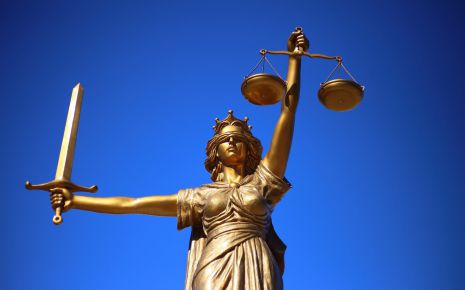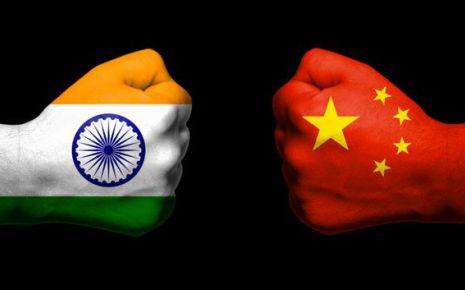White-Collar Crime
Prof. Sutherland has resented his concept of White-collar crime in his address
to American sociological society in 1949. Sutherland defined White-Collar crime
as a crime committed by a person of respectability and high social
status in the course of his occupation.[1] Later, he seems to have added a
refinement to the definition by defining white-Collar crimes as A person of the
upper socio-economic class who violates the criminal law in the course of his
occupational or professional activities.
He pointed out that White-Collar crime is more dangerous to society than ordinary crimes, firstly, because the financial losses were higher and secondly, because of the damage in public moral. Comparing the financial losses resulting from White-Collar crimes with those form of ordinary crimes, he observes:
The financial loss to society from White-Collar crimes are probably greater than the financial loss from burglaries, robberies and larcenies committed by persons of the lower socioeconomic class.
The average loss from burglary is less than one hundred dollars, a burglary which yields as much as fifty thousand dollars is exceedingly rare, and a million-dollar burglary is practically unknown. On the other hand, there may be several million-dollar embezzlements reported in one year. Embezzlements, however, are peccadilloes compared with large- scale crimes committed by corporations, investments trusts and public utilities holding companies, report of fifty-million-dollar losses from such criminal behaviour are by no means are common.
Regarding the damage to morale and institutions, Sutherland expresses the view that financial loss is less important than the damage to the social relation since it creates distrust, lower morale and produces disorganization on a large scale. On the other hand, the social damage from ordinary crime is said to have relatively little effect on our institutions and social organisations.
Conclusion
White-collar offences are a significant global problem and are growing at an unprecedented pace. Different reports have found that the financial cost of white-collar crime to society is much greater than most offences. White Collar Crimes thrives on poor organizations, bad government, and bad governance; it needs to be done immediately before the economy crashes to nip in the bud the growing occurrence of white-collar crimes.
India is a developing economy, so white-collar crimes are not only harmful to the country's economic development but are also devastating to the reputation of our people. Threats and damage to the well-being of Indians caused by White Collar Crimes cannot be underestimated.
The White-Collar Crimes is the bane of most developed countries, especially India. It should be readily recognized that reducing white-collar crime is not simple at all as it has been in place for many decades, but we, along with the government and legal institutions, will seek to eliminate these crimes. Stringent rules and special courts should be developed and enforced in such a manner that the criminal should be fearful of retribution and should consider twice before performing another crime. In fact, the police departments will make a concerted effort to eradicate these criminals from our nation.
References:
He pointed out that White-Collar crime is more dangerous to society than ordinary crimes, firstly, because the financial losses were higher and secondly, because of the damage in public moral. Comparing the financial losses resulting from White-Collar crimes with those form of ordinary crimes, he observes:
The financial loss to society from White-Collar crimes are probably greater than the financial loss from burglaries, robberies and larcenies committed by persons of the lower socioeconomic class.
The average loss from burglary is less than one hundred dollars, a burglary which yields as much as fifty thousand dollars is exceedingly rare, and a million-dollar burglary is practically unknown. On the other hand, there may be several million-dollar embezzlements reported in one year. Embezzlements, however, are peccadilloes compared with large- scale crimes committed by corporations, investments trusts and public utilities holding companies, report of fifty-million-dollar losses from such criminal behaviour are by no means are common.
Regarding the damage to morale and institutions, Sutherland expresses the view that financial loss is less important than the damage to the social relation since it creates distrust, lower morale and produces disorganization on a large scale. On the other hand, the social damage from ordinary crime is said to have relatively little effect on our institutions and social organisations.
Types of White-Collar crimes:
- Frauds in business in relation sale of bonds and investments
- Adulteration of foods and drugs and misleading advertisements.
- Malpractices in the medical profession, such as the illegal sale of alcohol and narcotics, abortion, illegal services to underworld criminals, fraudulent reports and testimony in accident cases, an extreme case of unnecessary treatment, fake specialist, restriction of competition and fee-splitting.
- Crimes by lawyers such as guiding criminal or quasi-criminal activities of corporations, twisting of testimony to give a false picture, fake claims (bogus liability in accidents), etc.,
- Trusts, cartels, companies, syndicates, etc., formed to combat competition, or to raise prices or otherwise to interfere with the freedom of trade to the determinant of honest businessmen or the consuming public. This has how now become a branch of law by itself and is usually dealt with under the topic of anti-trust legislation. Bribery and graft by public offices.
Criticism Of Sutherland�s Definition:
- The concept of White-collar crime as propounded by Sutherland as evoked
a sharp criticism particularly from those who maintain that only a person
found guilty of violating a criminal law provision by a criminal court can
legitimately be regarded as criminal.
� - Most of the white-collar crimes are not handled by ordinary criminal
courts but by commissions, administrative tribunals and boards. Therefore,
it has argued that offenders can�t be said to have acquired the status of a
criminal.
� - He made a view that punishment need not necessarily be given through a
criminal court. According to him, the white-collar offence is crimes because
they have been harmful to the social and legal sanctions in the form of
various punishments are available to deal with them.
� - The objection regarding the white-collar crime is based on the concept
of mens rea or guilty. Many statutes dealing with white-collar crimes do
not require any mens rea. Writers like Jerone Hall do not recognise them as real
crimes but only as regulatory offences.
� - According to Newman, there is no basic difference between the nature of ordinary and white-collar crimes. White-collar crimes, as well as traditional offences, have their route in common-law and are adoptions of principles of theft, fraud and the like to modern socio-economic institutions. The only peculiarity of white-collar offences are the relatively high status of the offenders, but the criminal content in both types is equally present. The former may add water to the milk and the television repairman may charge for unnecessary repairs. According to Newman, the white-collar regulations are intended to remedy rather than to punish.
Growth Of White-Collar Criminality
- When a country develops, the white-collar crimes in that country is also increased.
- Increase in white-collar crime can be observed by the development in the production sector which helps to increase the economy of society
- Most of the white-collar crimes are directly, or indirectly connected with the production and distribution of wealth.
- The advance technology and scientific development place a major role in increasing the rate of white-collar crimes.
- During the last 30 years, the country has seen the execution of various five years plans involving a huge expenditure by the government for various nation-building activities. Corrupt officers, businessmen and contractors never had so well. No doubt the country did make some progress, but a big chunk of money earmarked for the developmental projects has been pocketed by white-collar criminals.
Anti White-Collar Crimes Legislation:
- White-collar criminals are much more dangerous than blue-collar
criminals why many white-collar criminals go unpunished?
- According to Sutherland, the preferential treatment of white-collar
offenders could be explained in terms of their high socio-economic status,
the remedial philosophy of the laws in question and the relativity unorganised resentment of the public against white-collar crimes.
The reason for the absence of such resentment was as follows:
- The violation of law in such cases are complex and can be appreciated
only by experts.
� - The public agencies of communication (Like press) do not express the organised the moral sentiments of the community, partly because the crimes are complicated and can�t be easily presented as news, but probably in greater degree because these agencies of communication are themselves controlled by businessmen involved in the violation of many of these laws.
- The laws for the regulation of business belong to a relatively new and specialised part of statues.
- The violation of law in such cases are complex and can be appreciated
only by experts.
- Another obstruction in the prosecution and punishment of white-collar
criminals apart from the fact that the public is not only indifferent and
apathetic towards such violations of law is that quite often the members of
the community themselves contribute to the commission of various
white-collar crimes.
- In other words, the Victims of the crime are also to blame for
white-collar criminality. In fact, many such crimes can�t be committed
unless there is a demand for illegal goods and services in a community.
- Finally, one more factor is believed to be responsible for failure to punish or for inadequate punishments so far as white-collar crimes are concerned. Judges of the courts ordinarily, belong to the upper strata of society and this factor may determine their attitude towards white-collar offenders who have also come from the same social strata.
Judicial Attitude � Recent Change
- Courts generally use different treatments to white-collar criminals.
� - Trial courts in India sometimes fail to realise the gravity of
white-collar crimes and therefore tend to be contented by awarding light or even
token punishments to white-collar criminals.
� - In Forty-seventh Law Commission, the committee made the following
observation: Suggestions are often made that in order that the lower
magistracy may realise the seriousness of some of the social and economic
offences, some method should be evolved of making the judiciary conscious of
the grave damage caused to the country�s economy and health by such
anti-social crimes. We hope that the higher courts are fully alive to the
harm, and we have no doubt that an appropriate occasion, such as judicial
conference, the subject will receive attention. It is of utmost importance
that all-state instrumentalities involved in the investigation, prosecution
and trial of these offences must be oriented to the philosophy which treats
the economic offences as a source of grave challenge to the material wealth
of the nation.
� - M.H. Hoskat v. The State of Maharashtra[2] can be considered as
an example of the attitude of a lower judiciary towards white-collar crimes
and criminals.
- Hoskat, a reader in Saurashtra University, was found guilty of an attempt to access degree certificates of the Karnataka University. The session court awarded him a single day imprisonment.
- The court justified its action by stating that the offender has no criminal tendencies to get involved in a crime in future.
- On an appeal by the state, the high court enhances the period of the imprisonment to three years.
- Supreme Court termed the sentence awarded by the session court as Incredibly indiscrete and warned the session court for awarding the wrong sentences.
- According to Sutherland�s definition, there is no white-collar crime in
this case but it can be taken as an instance for better understanding.
�
- In Muralidhar Megharaj Loya .v.
The State of Maharashtra[3], it is trite that this social mission of food laws
should inform the interpretative process. So that, the legal blow may fall on
every adulterator. Any narrow and pedantic literal and lexical construction
likely to leave loopholes for these dangerous criminals try to sneak out of the
measures of the law should be discouraged.
� - Finally, courts in India has given strict interpretation of the socio-economic statues which do not require any mens rea either in the form of intention or knowledge for committing an offence
White Collar Crime in India
Business, trade, commerce and Industry
- What Sutherland wrote about American Society is equally true of the
conditions in India. The Santhanam committee gave a graphic account of the
misdeeds of businessmen and industrialist in the following words Corruption can
exist only if there is someone willing to corrupt and capable of
corrupting. We regret to say that both the willingness and
capacity to corrupt is found in a large measure in the industrial and
commercial classes.[4]
� - This corruption is not only an easy method to secure large unearned
profits, but also the necessary means to enable them to be in a position to
pursue their vocations are retained their positions among their own
competitors.
� - It is they who has control over large funds and are in a position to
spend considerable sums of money on entertainment.
� - Another White �Collar crime which is quite prevalent among businessmen
are the violation of foreign exchange act and imports and exports act.
� - According to the Santhanam Committee, report secret Hoards of
foreign exchange are build-up by Indian businessmen through under-invoicing of
exports and over-invoicing of imports.
� - A number of other offences are also committed by businessmen which
require separate treatment due to their gravity. Some of them, like tax
evasion, is not confined to businessmen alone.
�
- What Sutherland wrote about American Society is equally true of the
conditions in India. The Santhanam committee gave a graphic account of the
misdeeds of businessmen and industrialist in the following words Corruption can
exist only if there is someone willing to corrupt and capable of
corrupting. We regret to say that both the willingness and
capacity to corrupt is found in a large measure in the industrial and
commercial classes.[4]
Food and Drug Adulteration:
- In India, the problem is so widespread that 25% to 70% of most of the
foodstuff consumed in the country are adulterated are contaminated.
� - According to the paramedical enquiry committee, Government of India, the
spurious drugs trade flourishes in India to a colossal extend. This is due
to the greed of the manufactures, ignorance of the poor consumers who go in
for cheap medicine from unauthorised dealers and the shortage of
genuine goods.
� - Prosecution under the prevention of food adulteration act, fail quite
frequently because of defective reports of the public analysis or delay in
examination of samples or because the procedure prescribed by the act for
taking samples is not allowed.
�
- In India, the problem is so widespread that 25% to 70% of most of the
foodstuff consumed in the country are adulterated are contaminated.
Violation of Taxation Laws:
- Some of the more important and frequent tax violation which occur in
India are in the areas of income tax, wealth tax, Estate duty and sales tax.
The laws resulting from the violations to the state exchequer is tremendous.
Apart from the financial implications of the problem, there are other
dimensions of the evil such as corrupting influence of the tainted money on
governmental machinery and the consequence of contempt, disrespect towards
law in general.
� - Tax laws in India are generally too complex and cumbersome to be
administrated smoothly. Those who are determined to evade taxation never
fail to deduct the loopholes in the relevant statutes and therefore, manage
to manipulate their affairs accordingly.
� - The Wanchoo committee appointed by the Government of
India in 1970, to make recommendations to unearth black money and combat tax
evasion identified the following direct effects of a black money economy in
the country.
- There is a loss of revenue to the state. This and the immobility of investable funds contribute to the dearth for resources of national development.
- It results in inequitable taxation: the honest taxpayer suffers in the process.
- Since the unaccounted money cannot be declared or invested through a law full channels, a good part of it is spent in lavish consumption and unproductive uses resulting in waste as when as in inflation.
- The most disastrous aspect of the phenomenon of black money is that the
general moral fibre of society as the
whole is adversely affected.
�
- Courts in India have recognised the distinction between evasion
and avoidance and the following observation of a judge of the Bombay High
Court sums up the matter: A citizen is perfectly entitled to exercise his
ingenuity so as to arrange his affairs as may making it possible for him legally
and lawfully not to pay tax and if is ingenuity succeeds, however elegant the
court may be to acknowledge the cleverness of the assessee the court must give
effect to the letter of the taxation law rather than strain that letter against
the assessee.
�
- Some of the more important and frequent tax violation which occur in
India are in the areas of income tax, wealth tax, Estate duty and sales tax.
The laws resulting from the violations to the state exchequer is tremendous.
Apart from the financial implications of the problem, there are other
dimensions of the evil such as corrupting influence of the tainted money on
governmental machinery and the consequence of contempt, disrespect towards
law in general.
Corruption in government and politics:
- Corruption is one of the most talked-about subjects today in the country
since it is believed to have penetrated in to every sphere of government and
political activity.
� - Corruption of various forms has always existed not only in India but
also in countries which are materially and politically more advanced.
� - Corruption in the modern context as acquired much wider connotation
compared to the traditional the meaning given to the term which as confirmed
to the concept of bribes of illegal gratification took by public servants.
� - In its wider sense, corruption includes all forms of dishonest gains in
cash, kind or position by persons in government and those associated with
public and political affairs.
� - Corruption among ministers and other political persons is more dangerous
than corruption government missionary. In terms of stakes involved in public
life.
� - The more usual forms of political corruption in India are grafts,
violation of election laws and the abuse of official and political machinery
because of the political force with big business.
�
- Corruption is one of the most talked-about subjects today in the country
since it is believed to have penetrated in to every sphere of government and
political activity.
White-collar crimes in Profession:
- Among the many professions in India, the possibilities for committing
white-collar crimes are abundant.
� - The majority of people belonging to the medical profession may not
commit criminal or unethical acts in the course of their profession, but
still, the number of those who violate the professional and legal norms is
not insignificant. The most common instance is illegal abortion, false
medical certificate and unnecessarily prolonged treatment in many cases.
� - Another widespread violation consists of prescribing medicines which one
is not supposed to have regard to his training or the system of medicine
permitted to be followed by him.
� - White-collar criminality among lawyers is believed to be fairly
widespread. Though, such criminality is found to exist in many countries the
situation in India
is further aggravated by the fact that there are too many lawyers having regard
to the work available to them with the result that all sorts of unscrupulous
practices have corrupt into the profession.
- The typical civil and technical infringements perpetrated by attorneys� counsel organized traffickers, help in favouring bogus statements and fabricate fake proof.
- Among the many professions in India, the possibilities for committing
white-collar crimes are abundant.
Conclusion
White-collar offences are a significant global problem and are growing at an unprecedented pace. Different reports have found that the financial cost of white-collar crime to society is much greater than most offences. White Collar Crimes thrives on poor organizations, bad government, and bad governance; it needs to be done immediately before the economy crashes to nip in the bud the growing occurrence of white-collar crimes.
India is a developing economy, so white-collar crimes are not only harmful to the country's economic development but are also devastating to the reputation of our people. Threats and damage to the well-being of Indians caused by White Collar Crimes cannot be underestimated.
The White-Collar Crimes is the bane of most developed countries, especially India. It should be readily recognized that reducing white-collar crime is not simple at all as it has been in place for many decades, but we, along with the government and legal institutions, will seek to eliminate these crimes. Stringent rules and special courts should be developed and enforced in such a manner that the criminal should be fearful of retribution and should consider twice before performing another crime. In fact, the police departments will make a concerted effort to eradicate these criminals from our nation.
References:
- Nirmal Kanti Chakrabharti, Administration of Criminal Justice: Perception and practice
- M.H. Hoskat v. The State of Maharashtra, 1978 AIR 1548, 1979 SCR (1) 192
- Muralidhar Megharaj Loya .v. The State of Maharashtra, 1976 AIR 1929, 1977 SCR (1)
- Report of the Committee on Prevention of Corruption, Government of
India, Ministry of Home Affairs, https://cvc.gov.in/sites/default/files/scr_rpt_cvc.pdf
Written By:
- C.Amirdha Varshini, B.Com., L.L.B., (Hons.) III year - Sastra Deemed To Be University
- S.Shakthi Jayanth, B.Com., L.L.B., (Hons.) III year - Sastra
Deemed To Be University

Authentication No: AG022615535632-13-820
Law Article in India
Legal Question & Answers
Lawyers in India - Search By City
LawArticles
How To File For Mutual Divorce In Delhi

How To File For Mutual Divorce In Delhi Mutual Consent Divorce is the Simplest Way to Obtain a D...
Increased Age For Girls Marriage

It is hoped that the Prohibition of Child Marriage (Amendment) Bill, 2021, which intends to inc...
Facade of Social Media

One may very easily get absorbed in the lives of others as one scrolls through a Facebook news ...
Section 482 CrPc - Quashing Of FIR: Guid...

The Inherent power under Section 482 in The Code Of Criminal Procedure, 1973 (37th Chapter of t...
The Uniform Civil Code (UCC) in India: A...

The Uniform Civil Code (UCC) is a concept that proposes the unification of personal laws across...
Role Of Artificial Intelligence In Legal...

Artificial intelligence (AI) is revolutionizing various sectors of the economy, and the legal i...








Please Drop Your Comments